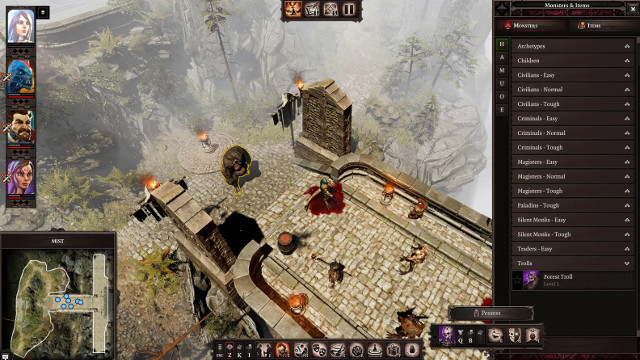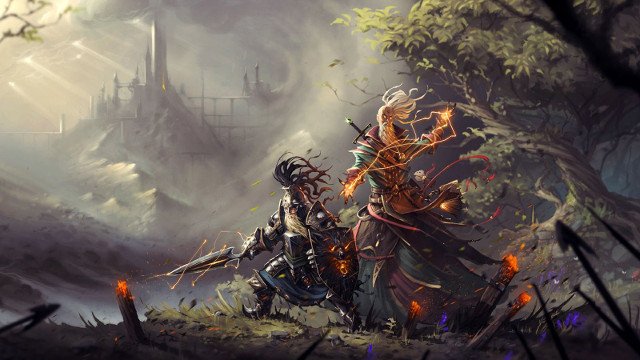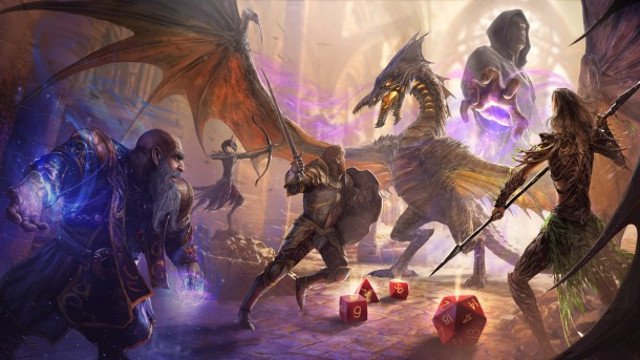Divinity: Original Sin 2 is out, and it’s already proving to be one of the most popular games on Steam. But while it may have proven to be a hit with PC gamers, fans of tabletop games — specifically Dungeons and Dragons — should definitely give it a shot, too.
CRPG games tend to take a lot of cues from D&D in general, but Divinity: Original Sin 2 excels at bringing the legendary roleplaying game to life more so than any other video game so far. Not only is the core campaign of Original Sin 2 like playing out a fantastic D&D campaign in a virtual world, but it also boasts a unique Game Master mode that allows a Dungeon Master to take a party through a custom adventure of their own design.
As a Dungeons and Dragons player, Divinity: Original Sin 2 has won me over with how well it replicates the hook of the enduring fantasy game. If you’re a D&D fan, here’s why you’ll love it, too:
It has the best Dungeons and Dragons mode of any game
Let’s get the most obvious reason out of the way first: Divinity: Original Sin 2‘s Game Master mode will effectively allow you to become a Dungeon Master, leading your friends on a completely custom adventure of your own creation if you so wish. The level of detail that developers Larian Studios have put into making this a possibility is it at once incredibly impressive and very daunting, with it allowing DMs to meticulously create their stories before allowing them to be playable. Simply put, it’s the most intricate Dungeons and Dragons experience you’ll find in a video game, and if you’re interested in seeing the tabletop game faithfully replicated in a virtual space then you’re going to want to experience it.
Also: 5 Tips I Wish I Knew Before Starting Divinity: Original Sin 2
While I am nowhere near an adept enough DM to consider tackling crafting my own campaign, those who are will find plenty of options to fiddle around with, with them able to lay out scenery, NPCs, unique battles and craft their very own story for other players to tackle. With D&D predominantly taking place in the collective imagination of its players, having adventures that would typically play out on sheets of paper suddenly brought to life in Divinity‘s gorgeous world is a real treat, and those with the time to sit down and do so will lose countless hours to the game. There’s also the option to play out pre-made campaigns, allowing DMs with less time on their hands to still guide players through exciting adventures, while allowing for customization on the fly if there are elements of their journey that they wish to change.
A narrated adventure

If you get a good Dungeon Master in Dungeons and Dragons who is able to articulate every scene compellingly, then you can expect to have a wild ride that’ll hook you in from the beginning. This is much the case in Divinity: Original Sin 2‘s campaign, which basically plays out like a really, really good D&D adventure with the world’s best Dungeon Master (sorry, Matt Mercer).
Divinity: Original Sin 2‘s narrator essentially stands in for a Dungeon Master, sharing more details about the game’s world as you progress, along with helping to better paint a picture of the various interactions you’ll have with the hundreds of characters you’ll meet. This really helps to paint a better picture of the game’s world, crafting this immersive and exciting adventure that is apparent in all of the best D&D campaigns. Even if you’re an old-school D&D fan and can’t imagine playing it without the sheets of the paper and the dice rolls, there’s so much effort put into Divinity: Original Sin 2 that it’s difficult to not be bowled over by it.
Experimentation
My favorite thing about playing Dungeons and Dragons is the level of experimentation afforded to its players. If you’ve got a lenient Dungeon Master, you can spend hours in one small section of your quest just messing around with the various characters and your surroundings, dealing with enemy confrontations in unexpected ways that cause your DM to think on their toes, leading to surprising (and routinely hilarious) consequences.
Divinity: Original Sin 2‘s campaign obviously operates within the boundaries of its game world, but there is a high degree of experimentation that is no more apparent than in its battles. Like D&D, a party will often come up against seemingly insurmountable odds when facing off against a pack of enemies, who are routinely more powerful and more well-equipped than you and your friends. However, by taking note of your surroundings, most of the time you will find various traps or environmental hazards that can aid you in besting your opponents, whether it be firing off an electrical attack into a pool of water, or taking advantage of rainfall to chill the air and freeze your rivals.
There’s a turn order to Divinity: Original Sin 2‘s battles (though no rolls for initiative outside the Game Master mode), so you and your party are going to want to communicate what each of you will do on your turn before you go ahead and attack. While storming in and attempting to smite your foes is an option, it is a routinely foolish one that will more than likely lead to one of your party members being forced to resurrect you. The game instead favors those who take their time and consider their enemies’ strengths, weaknesses and their surroundings before making any rash decisions, and planning out a successful attack is just as satisfying chopping down a monster in D&D. Oh, and you can also decide to turn on your party members for no discernible reason and kill them, too, if that’s your thing.
Quest within a quest

Every RPG has side-quests, but Divinity: Original Sin 2 has a much more interesting way of opening them up to the player than simply requiring you to visit a marked NPC on your map. The game rewards players who explore its surroundings, with those who choose to carefully comb every room they enter routinely finding themselves beginning new adventures that they wouldn’t have encountered otherwise.
This works much in the same way as Dungeons and Dragons, which rewards players with a keen eye who go out of their way to look into every nook and cranny of every new area they enter. Unlike most RPGs, where side-quests are basically shoved in your face from the get-go, some of Divinity: Original Sin 2‘s more interesting optional quests are hidden away from plain sight, so thorough players are going to want to examine pretty much everything. Of course, it’s perfectly fine to not do this and continue on with the main story, but it’s there for the players who want it.







